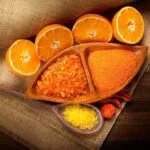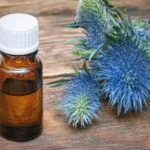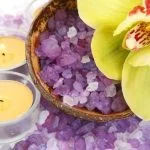Aromatherapy has long been praised for its ability to enhance overall well-being through the use of essential oils. In today’s fast-paced world, where stress and anxiety are prevalent, incorporating aromatherapy into our daily routines can make a significant difference in our physical, emotional, and mental health. By following an aromatherapy treatment plan template, individuals have the opportunity to personalize their wellness journey and experience the therapeutic benefits of essential oils.
Originating from ancient practices, aromatherapy utilizes the natural healing properties of plant extracts to promote relaxation, improve mood, and alleviate various ailments. Understanding the history and origins of aromatherapy is crucial in appreciating its effectiveness in enhancing overall well-being. Essential oils work synergistically with our bodies to create a harmonious balance that stimulates healing from within, making aromatherapy a holistic approach to health and wellness.
The benefits of aromatherapy extend beyond just relaxation – it has been shown to improve sleep quality, boost immune function, reduce inflammation, and even enhance cognitive function. Whether you are looking to alleviate stress, soothe muscle tension, or uplift your mood, creating a personalized aromatherapy treatment plan can help you achieve your goals effectively.
By selecting the right essential oils and utilizing various techniques such as diffusing or massage, you can experience the transformative power of aromatherapy in improving your overall well-being.
Understanding Aromatherapy
Aromatherapy has been used for centuries as a natural healing practice that harnesses the power of essential oils to promote overall well-being. Understanding the history and origins of aromatherapy can provide insight into its efficacy and benefits. The roots of aromatherapy can be traced back to ancient civilizations such as Egypt, China, India, and Greece, where aromatic plants were used for medicinal purposes.
History of Aromatherapy
In ancient Egypt, aromatic plants were incorporated into religious rituals and embalming practices. The Egyptians also utilized essential oils for their therapeutic properties in treating various ailments. Similarly, in ancient China and India, aromatics like herbs and spices were used in traditional medicine to balance the body’s energies and promote healing. The Greeks further developed the practice of using aromatic substances for medicinal and cosmetic purposes.
How Essential Oils Work
Essential oils are concentrated plant extracts that are obtained through processes like distillation or cold pressing. These oils contain potent bioactive compounds that interact with receptors in the body when inhaled or applied topically. When inhaled, the molecules from essential oils trigger olfactory receptors in the nose, sending signals to the brain that can affect emotions, mood, and even physiological responses.
When used topically, essential oils can be absorbed through the skin and enter the bloodstream to exert their therapeutic effects. Understanding how these essential oils work on a molecular level is crucial in formulating an effective aromatherapy treatment plan template tailored to individual needs and goals.
Benefits of Aromatherapy
Aromatherapy has been used for centuries to promote physical, emotional, and mental well-being. The benefits of aromatherapy are vast and can have a significant impact on one’s overall health. One of the key advantages of aromatherapy is its ability to reduce stress and anxiety levels. Essential oils such as lavender, chamomile, and bergamot have calming properties that can help relax the mind and body, promoting a sense of peace and tranquility.
Furthermore, aromatherapy is known for its potential to improve sleep quality. Essential oils like cedarwood, valerian, and ylang-ylang can aid in relaxation and create an optimal environment for restful sleep. By incorporating these oils into a bedtime routine or diffusing them in the bedroom, individuals may experience deeper sleep cycles and wake up feeling refreshed and rejuvenated.
In addition to emotional benefits, aromatherapy can also have a positive impact on physical health. Certain essential oils possess antiseptic, anti-inflammatory, and analgesic properties that can help with various physical ailments. For example, tea tree oil is known for its antibacterial qualities, while peppermint oil can alleviate headaches and muscle tension. By incorporating these oils into a holistic treatment plan, individuals can target specific health concerns and improve their overall well-being.
| Aromatherapy Benefit | Example Essential Oils |
|---|---|
| Stress reduction | Lavender, Chamomile, Bergamot |
| Improved sleep quality | Cedarwood, Valerian, Ylang-Ylang |
| Physical health benefits | Tea Tree Oil (antibacterial), Peppermint Oil (headache relief) |
Creating Your Aromatherapy Treatment Plan
When embarking on your aromatherapy journey, it is crucial to create a personalized treatment plan that caters to your specific needs and goals. The first step in developing your plan is to assess what you hope to achieve through aromatherapy. Whether you seek relaxation, stress relief, improved sleep, or pain management, clarifying your objectives will help you select the most suitable essential oils and techniques for your plan.
Once you have identified your goals, the next step is to research and select the essential oils that align with your desired outcomes. Each essential oil possesses unique properties and benefits, making it essential to choose oils that will support your aromatherapy goals effectively.
For example, lavender is known for its calming properties, while peppermint is often used for boosting energy and mental clarity. By understanding the specific benefits of different essential oils, you can curate a blend that addresses your individual needs.
After choosing the essential oils for your treatment plan, it is important to establish a routine that incorporates aromatherapy into your daily life seamlessly. Whether you prefer diffusing oils throughout the day, adding them to bathwater in the evening, or applying them topically during massage therapy sessions, consistency is key in maximizing the benefits of aromatherapy.
By following a structured schedule tailored to your preferences and lifestyle, you can experience holistic wellness and enhanced well-being through the power of aromatherapy.
| Key Points | Benefit |
|---|---|
| Identifying goals | Helps in selecting suitable essential oils |
| Researching essential oils | Aids in creating a blend tailored to individual needs |
| Establishing a routine | Ensures consistent use for maximum benefits |
Selecting Essential Oils
When it comes to creating an effective aromatherapy treatment plan, selecting the right essential oils is key. Essential oils not only provide pleasant scents, but they also offer a wide range of benefits for physical, emotional, and mental well-being. Understanding the different types of essential oils and their specific uses can help you tailor your aromatherapy experience to address your individual needs and goals.
To help you navigate through the vast array of essential oils available, here are some common types and their specific uses in aromatherapy:
- Lavender: Known for its calming and relaxing properties, lavender oil is great for reducing stress and promoting better sleep.
- Peppermint: With its invigorating scent, peppermint oil can help boost energy levels, improve focus, and alleviate headaches.
- Lemon: Fresh and uplifting, lemon oil is often used to enhance mood, increase alertness, and support immune health.
- Tea Tree: Recognized for its antibacterial properties, tea tree oil is commonly used in skincare routines to combat acne and soothe skin irritations.
Each essential oil has unique characteristics that cater to different aspects of well-being. By carefully selecting the oils that align with your desired outcomes, you can create a personalized aromatherapy treatment plan that meets your specific needs.
In addition to the essential oils mentioned above, there are numerous other options available with varied benefits. Whether you’re looking to alleviate anxiety, improve digestion, or enhance relaxation, there is an essential oil suited for every purpose. Experimenting with different combinations of oils can also lead to customized blends that provide even more targeted results in your aromatherapy journey.
Aromatherapy Techniques
Aromatherapy encompasses a variety of techniques that can be used to enjoy the benefits of essential oils for physical, emotional, and mental well-being. Whether you prefer a subtle scent filling the air around you or direct contact with the oils on your skin, there is a method that can suit your preferences. Here are some popular aromatherapy techniques to consider implementing in your treatment plan:
1. Diffusing: One of the most common ways to enjoy aromatherapy is through diffusing essential oils into the air. This method involves using a diffuser device that disperses the oil molecules into the room, allowing you to breathe in the therapeutic aroma. Diffusing is great for creating a calming atmosphere at home or work, promoting relaxation and stress relief.
2. Massage: Aromatherapy massage combines the benefits of essential oils with the soothing touch of massage therapy. By mixing diluted essential oils with carrier oils, such as coconut or almond oil, you can apply them directly to your skin during a massage session. The oils are absorbed through the skin and provide both physical and emotional benefits, making it a holistic approach to wellness.
3. Inhalation: Direct inhalation of essential oils is another effective method of experiencing their therapeutic effects.
You can inhale oils by adding a few drops to a bowl of hot water and breathing in the steam, by placing them on a cotton ball near your pillow while you sleep, or by carrying an inhaler stick infused with essential oils for on-the-go use. Inhalation allows for quick absorption of the aromatic compounds into your bloodstream, offering immediate relief from various symptoms.
By incorporating these different aromatherapy techniques into your daily routine, you can create a personalized treatment plan that addresses your specific needs and enhances your overall well-being. Experiment with various methods to find what works best for you and enjoy the transformative power of essential oils in your life.
Sample Aromatherapy Treatment Plan Template
Setting Your Goals
When beginning your aromatherapy journey, it’s important to identify your goals and intentions for using essential oils. Whether you’re seeking stress relief, better sleep, improved focus, or emotional balance, clearly defining your objectives will guide the creation of your treatment plan. Consider what aspects of your physical, emotional, and mental well-being you want to address through aromatherapy.
Choosing Essential Oils
Once you have established your wellness goals, it’s time to select the essential oils that will support them. Different essential oils have unique properties that can address specific needs. For example, lavender is known for its calming effects and can aid in relaxation, while peppermint is invigorating and can boost energy levels. Research the various essential oils available and choose ones that resonate with your desired benefits.
Creating Your Daily Routine
With your goals set and essential oils selected, outline a daily routine for incorporating aromatherapy into your life. This may include diffusing calming oils in the morning to start your day on a peaceful note, using energizing blends during midday slumps for a boost in productivity, and winding down with relaxing scents before bedtime. Remember to personalize this routine according to your preferences and schedule for maximum effectiveness.
By following this sample aromatherapy treatment plan template and customizing it based on your individual needs, you can experience the transformative power of essential oils on your overall well-being. Stay consistent with your routine, be open to experimenting with different oils and techniques, and enjoy the holistic benefits that aromatherapy has to offer for a healthier mind, body, and spirit.
Tips for Success
When embarking on an aromatherapy journey and creating a personalized treatment plan, it is important to keep in mind some essential tips for success. By following these recommendations, you can maximize the benefits of your aromatherapy treatment plan template and enhance your overall well-being.
One key tip for success is to start small and gradually build up your experience with essential oils. It’s advisable to begin by selecting a few essential oils that address your specific needs and goals. As you become more familiar with their effects, you can explore and add more varieties to your collection. This gradual approach allows you to observe how each oil affects your body and mind, helping you tailor your treatment plan accordingly.
Another important tip is to prioritize self-care and consistency in your aromatherapy routine. Incorporating aromatherapy practices into your daily or weekly schedule can help you establish a sense of routine and discipline, which are crucial for reaping the full benefits of this holistic therapy.
Whether it’s through diffusing essential oils in your living space, incorporating them into your skincare regimen, or using them during meditation or yoga sessions, consistency is key in maximizing the positive effects of aromatherapy on your overall well-being.
Conclusion
In conclusion, aromatherapy is a powerful tool that can significantly improve overall well-being by addressing physical, emotional, and mental health. Understanding the history and origins of aromatherapy, as well as how essential oils work, provides a solid foundation for creating a personalized treatment plan. By following a step-by-step guide and selecting the right essential oils for individual needs and goals, individuals can experience the multitude of benefits that aromatherapy has to offer.
Exploring different aromatherapy techniques such as diffusing, massage, and inhalation opens up a world of possibilities for incorporating essential oils into daily routines. The sample aromatherapy treatment plan template provided serves as a helpful starting point for organizing and structuring a personalized plan. Following additional tips and recommendations for success will further enhance the effectiveness of the treatment plan in promoting holistic wellness.
It is never too late to start your aromatherapy journey towards holistic wellness. Embracing the power of essential oils and incorporating them into your daily routine can lead to profound improvements in both physical and mental health.
By taking charge of your own well-being through aromatherapy, you are investing in a natural and therapeutic approach to achieving balance and harmony in mind, body, and spirit. Start today and begin reaping the incredible benefits that aromatherapy has to offer for a healthier and more balanced life.
Frequently Asked Questions
What Are the Three Types of Aromatherapy?
Aromatherapy can be categorized into three main types: topical application, inhalation, and internal use. Topical application involves applying essential oils onto the skin through massages or baths. Inhalation includes diffusing essential oils into the air for respiratory benefits. Internal use is less common and involves ingesting essential oils under the guidance of a qualified practitioner.
What Happens in an Aromatherapy Session?
During an aromatherapy session, clients typically experience a combination of relaxation and invigoration through the use of various essential oils. The session usually starts with a consultation to determine the client’s needs and preferences, followed by the careful selection of essential oils based on those factors.
The oils are then used in massage, inhalation, or other applications to achieve the desired therapeutic effects.
What Are the Objectives of Aromatherapy?
The primary objectives of aromatherapy are to promote relaxation, enhance mood, alleviate stress and anxiety, relieve pain, improve sleep quality, support overall well-being, and boost immunity. By harnessing the natural healing properties of essential oils derived from plants, aromatherapy aims to balance physical, mental, emotional, and spiritual health through holistic means.

Are you looking for a natural way to improve your health and wellbeing?
If so, aromatherapy may be the answer for you.





